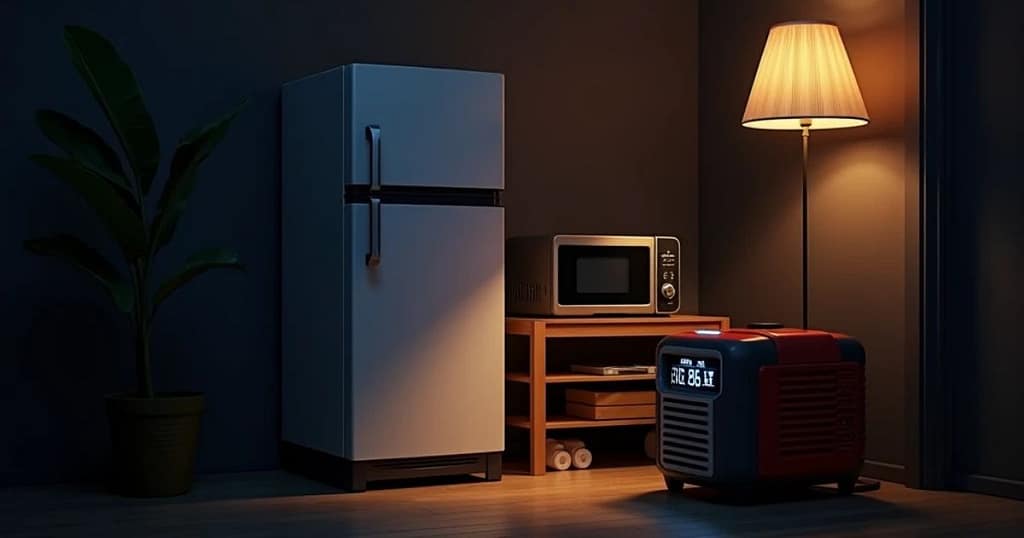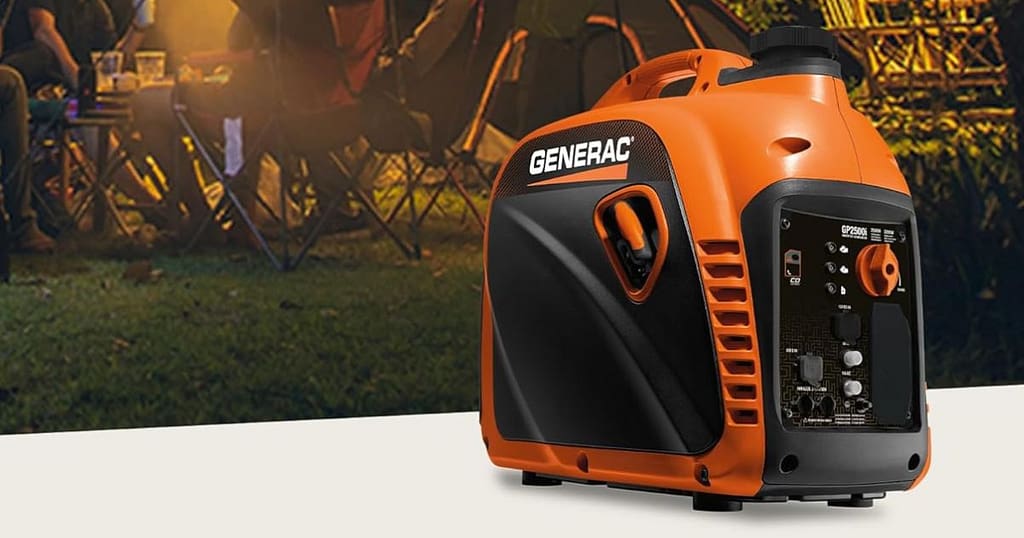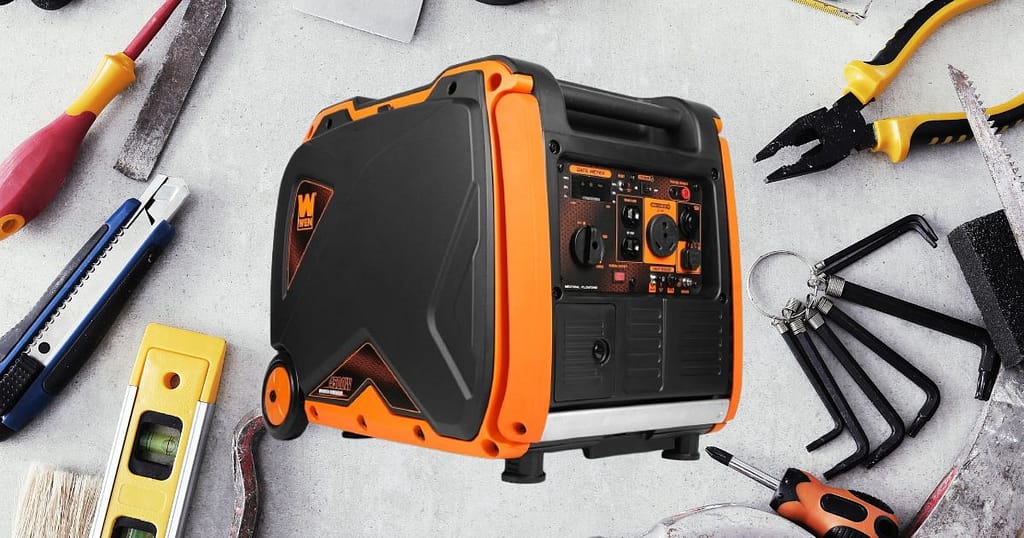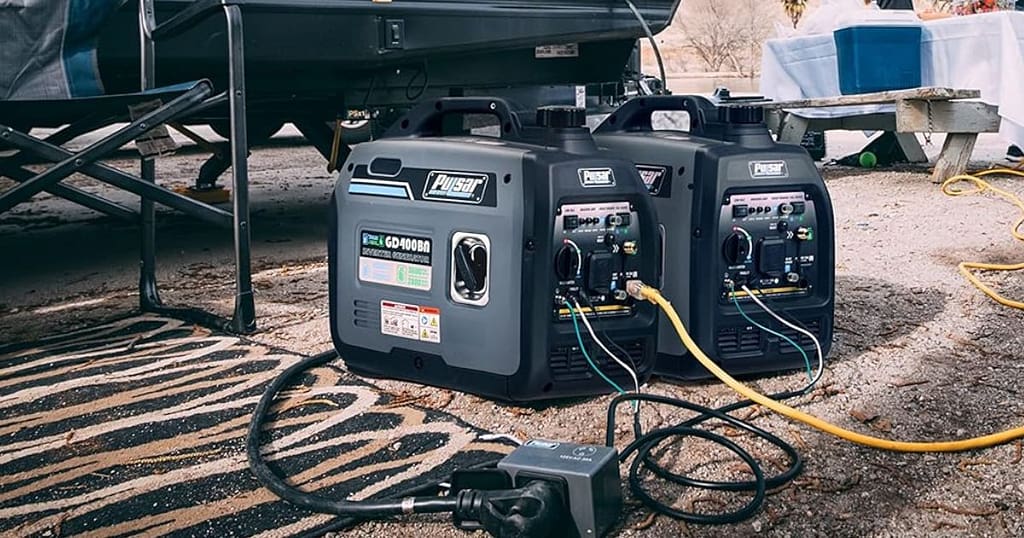Power outages can happen at any time, and when they do, having a backup power source like a generator is essential. Knowing which appliances you can run with your generator can make a huge difference in your comfort and safety, whether it’s due to a storm, equipment failure, or even a neighborhood blackout. But here’s the catch—generators, while useful, have limits. Running too many appliances at once or choosing the wrong ones can easily overload your generator, leaving you in the dark (literally).
After spending considerable time researching and testing different generator setups, I’ve learned a lot about managing power usage during outages. So, in this post, I’ll break down the best appliances to run with your generator and offer some tips on how to manage power consumption effectively to avoid overloading the system.
What are the Best Appliances to Run with Generator During a Blackout
1. Understanding Your Generator’s Capacity
Before diving into which appliances to power, it’s crucial to understand your generator’s capacity. Every generator has a wattage rating—this tells you how much power the generator can supply. Generally, you’ll see two ratings:
Surge Wattage (Starting Wattage): This is the initial power required to start an appliance. Appliances like refrigerators and air conditioners need extra power to start, so the surge wattage is higher.
Running Wattage: This refers to the power required for an appliance to keep operating once it’s up and running.
If you’re not careful, exceeding your generator’s running wattage can result in it overheating, tripping breakers, or even causing permanent damage to the unit. Make sure to know both the surge and running wattages of your generator and the appliances you plan to run.
2. Essential Appliances to Run During a Blackout
When the power goes out, it’s tempting to want to power everything you can, but doing so could easily overload your generator. Let’s break down which appliances are most important and why.
1. Refrigerator / Freezer
One of the first things people often want to power during a blackout is their fridge and freezer. Food spoilage is a major concern during power outages, and refrigerators are often the biggest consumers of power.
Why You Need It: Refrigerators and freezers are essential to keep your food from spoiling. While they use quite a bit of power, they cycle on and off, meaning they don’t require continuous running. As long as you limit how often you open the fridge, the generator can keep it running without too much strain.
Power Tip: Most refrigerators need around 600-800 watts of power to run smoothly during regular operation. However, when they first start up, they can experience a surge in power usage, reaching up to 1200 watts. This surge happens as the compressor kicks in, and it’s important to account for this extra demand, especially if you’re using a generator or managing energy use. Be mindful of this when planning which other appliances to run simultaneously.
2. Lights (LED or CFL)
Lighting is another critical component, especially for safety. Running lights during an outage is usually straightforward, but it’s important to use energy-efficient options like LED or CFL bulbs. These consume much less power compared to incandescent bulbs.
Why You Need It: Light allows you to move around safely, reduces the feeling of isolation, and helps you stay productive during the outage.
Powering Tip: LED bulbs use around 10-15 watts, and even several LED lights can be run off a small generator. For maximum efficiency, opt for LED or CFL bulbs instead of traditional incandescent ones. These energy-efficient options use significantly less power and last longer, helping to reduce both your energy bills and environmental impact.
3. Phone Chargers
In today’s world, staying connected is crucial, even when the power goes out. Keeping your phone charged is essential for emergency communication, navigation, and staying entertained during a crisis.
Why You Need It: In a blackout, a charged phone helps you stay informed about the outage, get updates on the restoration time, or even call for help if needed.
Powering Tip: Charging a smartphone typically requires about 5-10 watts of power. If you’re using a USB power brick, it will consume even less power, making it easy to keep multiple devices charged.
4. Sump Pump (for Basement Flooding)
If your home has a basement, a sump pump is a must-have appliance to run during a blackout. It helps prevent flooding by redirecting water away from your home’s foundation.
Why You Need It: During heavy rain, the sump pump keeps water from entering your basement. Losing this protection during a blackout can lead to significant water damage.
Powering Tip: A typical sump pump requires about 800-1200 watts to run and can surge up to 2000 watts when starting. Be mindful of how much other power your generator is supplying to avoid overloading.
5. Space Heater (For Short Periods)
While not always essential, during cold weather, a space heater can provide much-needed warmth. However, space heaters can consume a lot of power, so they should be used sparingly.
Why You Need It: If you live in a cold climate, staying warm during a blackout is crucial, especially if the outage lasts for an extended period.
Powering Tip: Space heaters use anywhere from 1500 to 2000 watts. If your generator has a high enough capacity, you may be able to run one for short periods of time, but avoid running it continuously.
3. Appliances to Avoid Running Simultaneously
While some appliances are essential during a blackout, others can easily overload a generator if run at the same time. Here’s a list of appliances you might want to avoid or prioritize:
1. Air Conditioners & Heaters
Air conditioners and large space heaters are power-hungry, requiring large amounts of wattage to start and run. Running both simultaneously would likely exceed the capacity of most generators.
Why Avoid It: Air conditioners can require over 2000 watts of running power and surge up to 3000 watts or more. Combining them with a heater or other high-wattage appliances can overload your system.
2. Washing Machine & Dryer
While not essential for survival, many people want to run their washer and dryer during a blackout. Unfortunately, these appliances consume a lot of power.
Why Avoid It: A washing machine uses around 500-1000 watts to run, but it can surge much higher when starting. Dryers are even worse, using anywhere from 2000 to 5000 watts, which is likely beyond what a portable generator can handle.
3. Electric Oven & Stove
Electric stoves and ovens are another big power drain. While convenient, they require a significant amount of wattage, and using them for an extended period may exceed your generator’s capacity.
Why Avoid It: Electric ovens typically require between 1500 to 5000 watts, depending on the model and what’s being cooked. Combine that with other appliances, and you might end up overloading the generator.
4. Tips for Managing Power Usage During a Blackout
Now that you know which appliances are best to run with your generator, let’s look at some strategies to ensure you’re using your power efficiently and avoiding an overload.
Prioritize Essentials: Focus on running appliances that keep you safe and comfortable, like your refrigerator, lights, and phone chargers. Limit the number of non-essential appliances you use.
Stagger Appliance Use: If you have a limited-capacity generator, don’t try to run everything at once. Stagger the use of high-wattage appliances like the space heater and sump pump.
Use Energy-Efficient Appliances: If possible, replace high-power-consuming appliances with energy-efficient alternatives. For example, LED bulbs, energy-efficient space heaters, and low-wattage refrigerators can help save power.
Track Your Wattage: Use a watt meter to keep track of how much power each appliance uses. This can help you avoid overloads and ensure your generator isn’t running at full capacity all the time.
Conclusion
A generator can be a lifesaver during a blackout, but knowing which appliances to run—and more importantly, how to manage power usage—can make all the difference. By prioritizing essential appliances, staggering power consumption, and avoiding overloading your generator, you can stay safe and comfortable until the power comes back on. Whether you’re keeping your food fresh, your lights on, or your phone charged, understanding how to use your generator wisely will make a stressful situation a lot more manageable.





